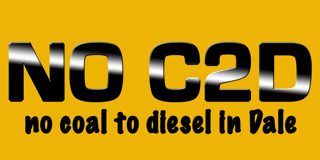The Proposed Plant
A coal-to-liquid (CTL) plant in northwest China (Ningxia Hui) Photo taken on 12/26/2016
Plant Equipment Summary
4 Flare stacks (towers)
3 Flares from the Reactor, which will burn purge gas and will burn the reactor gases in case of a shutdown
1 Loading Flare to burn tank emissions while loading diesel, naptha and ammonia
Pipelines
One pipeline to deliver water from the Ohio River (about 20 miles) to the plant
One pipeline to discharge waste water back into the Ohio (about 20 miles)
Coal Unloading, Storage & Preparation
Rail car dump, capable of handling 100 rail cars of coal (5000 tons of coal per hour)
4 coal stockpiles, each 100 feet tall
Coal milling and drying unit, this will pulverize the coal
Adding Chemicals and Mixing the Feed to the Reactor
Sodium Sulfide (Na2S) unloading and silo for storage
3 Mixing tanks/drums for preparation of slurry to the reactor
Main Reactor (the Veba Combi Cracking, or VCC, Unit)
High-Pressure Liquid- and Gas- Phase Hydrocrackers
“Residue” solidification unit (1124 tons per day of waste). Shipped out by railcar, truck or bulk containers.
Production of Sulfur from (Poisonous) Hydrogen Sulfide (H2S)
2 Sulfur Recovery Plants
Amine Regeneration Unit
Ammonia Stripper
Storage Tanks
4 Diesel product tanks, plus diesel fuel tank
2 Naptha product tanks
12 Pressurized ammonia tanks
“Slop” tank, amine tank, sour water tank, sulfuric acid tank, caustic tank, water tanks
Loading Product
Rail car loading capable of 8 railcars simultaneously at 2500 gpm each (20,000 gpm total) for diesel and naptha
Rail car loading for anhydrous ammonia
Rail car loading for molten sulfur
Rail car loading for “residue”
Truck loading for “residue”
Additional Equipment
2 Sulfur “Recovery” Plants
2 Molten Sulfur Pits
2 Diesel Generators (to run in event of power failure)
Hydrogen Production Unit
Ammonia (NH3) Recovery Plant
Water Supply and Treatment Plant
Waste Water Treatment Plant (discharge either to Ohio River or Little Pigeon Creek)
Plant Inputs, Outputs, and Intermediate Chemicals
Inputs
Illinois Number 6 coal: delivered by 100 car unit trains. Unloading will be up to 5000 tons per hour.
Water from the Ohio River: at a rate of 1.8 million gallons per day, via a pipeline yet to be constructed
Sodium Sulfide (Na2S): delivered by rail car. When exposed to moist air, Na2S and its hydrates emit hydrogen sulfide, which smells like rotten eggs.
Methyl diethanolamine (MDEA): used to separate poisonous hydrogen sulfide (H2S) from the gas produced in the reforming process and send it to another plant for conversion to sulfur.
Outputs
Diesel fuel: the energy needed to produce this fuel from this plant is almost the same as the energy contained in the product
Naptha: flammable, known to cause skin and airway irritation and cancer
Sulfur: smells like rotten eggs, will be stored on site
Carbon Dioxide (CO2): a major cause of global warming
Ammonia: will be stored on-site then shipped out
“Residue” Pellets: created from the coal waste, to processed and shipped…where?
Waste water: at a rate of over 1 million gallons per day, to be carried to the Ohio River via a pipeline yet to be constructed
Internally-Produced Chemicals
Hydrogen Sulfide (H2S): a deadly toxin which the U.S. government considers a high priority chemical threat, both industrially and as a potential weapon of mass destruction by terrorists
Ammonia: classified as an extremely hazardous substance in the United States, subject to strict reporting requirements by facilities which produce, store, or use it in significant quantities
Sulfur Dioxide (SO2): A major air pollutant and has significant impacts upon human health
Carbon Monoxide (CO): A toxic pollutant

